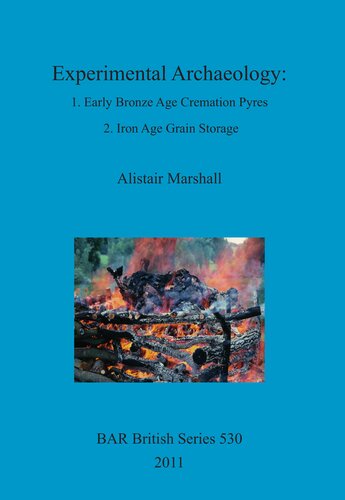

Most ebook files are in PDF format, so you can easily read them using various software such as Foxit Reader or directly on the Google Chrome browser.
Some ebook files are released by publishers in other formats such as .awz, .mobi, .epub, .fb2, etc. You may need to install specific software to read these formats on mobile/PC, such as Calibre.
Please read the tutorial at this link: https://ebookbell.com/faq
We offer FREE conversion to the popular formats you request; however, this may take some time. Therefore, right after payment, please email us, and we will try to provide the service as quickly as possible.
For some exceptional file formats or broken links (if any), please refrain from opening any disputes. Instead, email us first, and we will try to assist within a maximum of 6 hours.
EbookBell Team

4.8
34 reviewsTwo extended papers investigating two contemporary areas of experimental archaeology. Paper 1: Simulation of prehistoric cremation: experimental pyres, and their use for interpretation of archaeological structures. Excavation in 1990-1992 of the round barrow at Guiting Power 3, located in the Gloucestershire Cotswolds (England), produced burnt surfaces, scatters of fire-debris, and deposits of cremated human bone in primary locations. All of these elements were critical for interpretation of the sequenceof ritual at the site, and for discussion of its general function as a monument. Analysis of a series of fully-monitored experimental cremation pyres is used to supplement the interpretation of burnt pyre-bases, and other associated archaeological features, of the type found under Bronze Age round barrows in Britain, and to add detail to the process of ancient cremation. Paper 2: Methods of grain storage during the Iron Age in southern Britain: further investigation by experiment. Discovery of unusually large, rock-cut 'silo-pits' at certain Iron Age enclosures in the Cotswolds (Gloucestershire, UK), with parallels elsewhere, prompted examination of their potential as unsealed but roofed granaries, in view of practical difficulties inherent in sealing them at ground level and other structural evidence. A series of fully-monitored experiments allows their performance during over-winter storage of grain to be assessed, and compared with operation of smaller sealed pits.